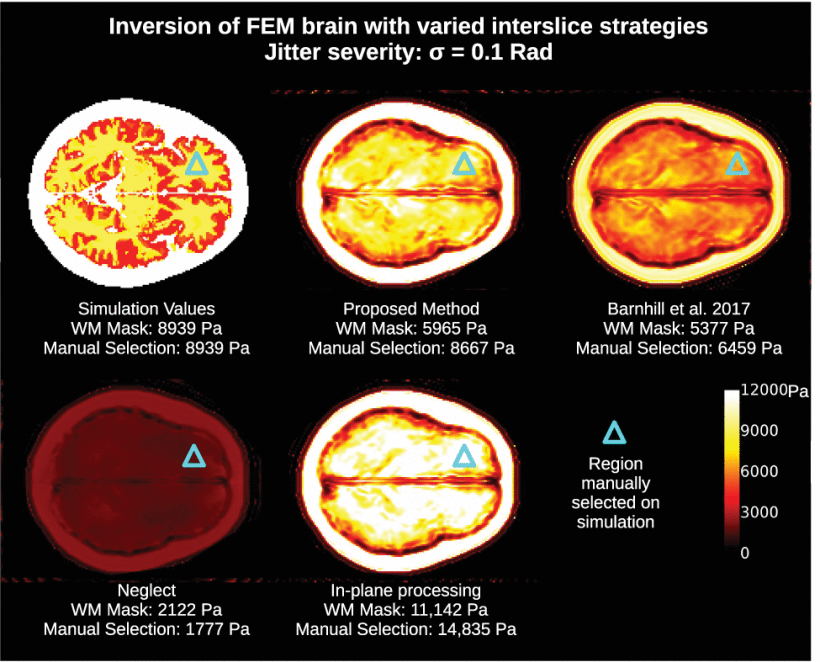Our PhD student Cemre Ariyurek has contributed to and published a paper as co-author, entitled “Fast Robust Dejitter and Interslice Discontinuity Removal in MRI Phase Acquisitions: Application to Magnetic Resonance Elastography”, with her collaborators Eric Barnhill, Mila Nikolova, Florian Dittmann, Jurgen Braun and Ingolf Sack.
The authors were honored to have co-authored
this publication with the great mathematician Mila Nikolova and dedicate it to
her memory.
Abstract:
MRI phase contrast imaging methods that
assemble slice-wise acquisitions into volumes can contain interslice phase
discontinuities (IPDs) over the course of the scan from sources, including
unavoidable physiological activity. In magnetic resonance elastography (MRE),
this can alter wavelength and tissue stiffness estimates, invalidating the
analysis. We first model this behavior as jitter along the z-axis of the phase
of 3D complex-valued wave volumes. A two-step image processing pipeline is then
proposed that removes IPDs. First, constant slicewise phase shift is removed
with a novel, non-convex dejittering algorithm. Then, regional physiological
noise artifacts are removed with novel filtering of 3D wavelet coefficients.
Calibration of two pipeline coefficients, the dejitter parameter α and the
wavelet band high-pass coefficient ωc , was first performed on a finite-element
method brain phantom. A comparative investigation was then performed, on a
cohort of 48 brain acquisitions, of four approaches to IPDs: 1) the proposed
method; 2) a “control" condition of neglect of IPDs; 3) an
anisotropic wavelet-based method; and 4) a method of in-plane (2D) processing.
The present method showed medians of [Formula: see text] Pa for a
multifrequency wave inversion centered at 40 Hz which was within 6% of methods
3) and 4), while neglect produced [Formula: see text] estimates a mean of 17%
lower. The proposed method reduced the value range of the cohort against
methods 3) and 4) by 29% and 31%, respectively. Such reduction in variance
enhances the ability of brain MRE to predict subtler physiological changes. Our
theoretical approach further enables more powerful applications of fundamental
findings in noise and denoising to MRE.
Barnhill, E., Nikolova, M., Ariyurek, C.,
Dittmann, F., Braun, J., & Sack, I. (2019). Fast Robust Dejitter and
Interslice Discontinuity Removal in MRI Phase Acquisitions: Application to
Magnetic Resonance Elastography. Ieee Transactions on Medical
Imaging, 38(7), 1578–1587. http://doi.org/10.1109/TMI.2019.2893369
